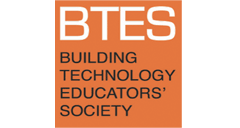Concrete Environments
DOI
https://doi.org/10.7275/277p-g597
Abstract
Concrete Environments was a two-week design charette in the Fall 2019 3a Housing Studio at the School of Architecture at Mississippi State University. Students explored how architecture created with 3d Printed Concrete can relate to the concepts of dwelling, interaction, and meaning typically explored in the Housing Studio - in addition to examining the materials and geometry of Advanced Fabrication.
Working toward Project Goals, the students were challenged to not just meet Physical and Functional Constraints, but to use these to equally examine the project’s epistemology, phenomenology, and technology.
Seeking to understand the human body and its interaction with the built environment, students interrogated the meaning of “dwelling” through focusing awareness of light, space, and the senses utilizing industry standards of 3D printing.
The designs were subject to Physical and Functional Constraints: constructed only from interlocked or nested assemblies of 3d printed parts, and were to embrace a part of the human body and providing three openings and two vessels.
The project began with an introduction to 3d Printing in Concrete from sponsor Pikus Concrete, who also provided feedback throughout. The student pairs then created clay models and charcoal drawings to freely conceptualize possible forms and atmospheres. Each group moved their most successful idea(s) into Rhino3d and iterated them to better realize the Project Goals. Desktop 3d Printing was essential in testing, prototyping, and documentation.
The students developed experience designing for this novel production process and using an analogous process to prototype their ideas. They learned how Advanced Fabrication can help balance functional and expressive aspects of a project. Further lessons learned by professors, students, and the industry partner are discussed in detail in the full paper.
Concrete Environments interrogated questions around the Conference themes of Practice, Measurement, High Tech, and Carbon. These are expanded in the paper.
Recommended Citation
McLemore, Duane and Gines, Jacob
(2021)
"Concrete Environments,"
Building Technology Educator's Society: Vol. 2021, Article 2.
DOI: https://doi.org/10.7275/277p-g597
Available at:
https://scholarworks.umass.edu/btes/vol2021/iss1/2

